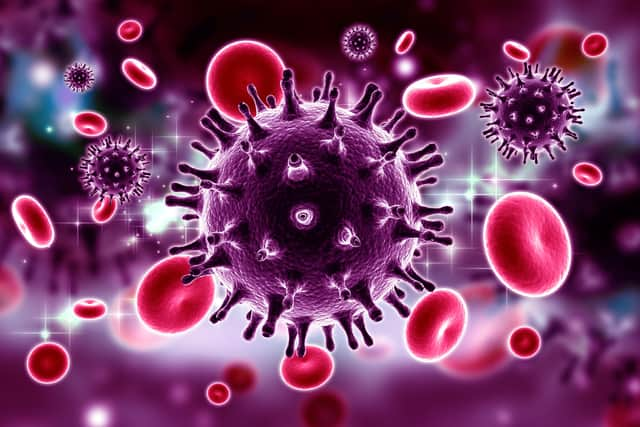New HIV variant: what is VB strain discovered in Europe, is it more infectious, and is there treatment?
This article contains affiliate links. We may earn a small commission on items purchased through this article, but that does not affect our editorial judgement.
and live on Freeview channel 276
A new variant of HIV that is more transmissible and potentially more dangerous has been discovered in Europe.
The “VB” variant - for virulent subtype B - was first detected in an international research project called Beehive, which monitors samples from across Europe and Uganda.


Advertisement
Hide AdAdvertisement
Hide AdAfter an initial 15 cases were found in the Netherlands, the team then analysed data from 6,700 HIV positive people and discovered another 92 cases of VB infection from across the country, bringing the nation’s total to 109.
Analysis of genetic patterns suggest that this variant may have first arose during the late 1980s and 1990s in the Netherlands, and spread more quickly than other variants during the 2000s.
However, it has been declining since around 2010.
Is the variant more infectious?
People infected with the VB variant have an average viral load (the level of the virus in the blood) between 3.5 and 5.5 times higher than is usual for HIV infection, and are more likely to spread the virus to others.
The variant also causes damage to the immune system twice as fast, due to the rate of decline in T cells, meaning people diagnosed with VB are at risk of developing Aids more quickly.
Advertisement
Hide AdAdvertisement
Hide AdResearchers in the study, published in the journal Science on Thursday (3 February), said: “By the time they were diagnosed, these individuals were vulnerable to developing AIDS within 2 to 3 years.”
Can it be treated?
Antiretroviral therapy used routinely to treat people with HIV works effectively against the VB variant, researchers said, meaning it does not pose a threat to public health.
Antiretroviral medicines work by stopping the virus replicating in the body, allowing the immune system to repair itself and prevent further damage.
A combination of HIV drugs is used as the virus can quickly adapt and become resistant.
Advertisement
Hide AdAdvertisement
Hide AdSome HIV treatments have been combined into a single pill, known as a fixed dose combination, although these often cost more to prescribe. Most people who have just been diagnosed with HIV take between one and four pills per day.
Effective treatment can suppress transmission of the virus and patients diagnosed with VB were found to have similar immune system recovery and survival rates to those with other HIV strains.
However, researchers stressed that VB does cause the immune system to decline more rapidly, making it critical that patients are diagnosed early and receive treatment as soon as possible.
Chris Wymant, the study’s lead author, said: “The worst-case scenario would be the emergence of a variant that combines high virulence, high transmissibility and resistance to treatment.
Advertisement
Hide AdAdvertisement
Hide Ad“The variant we discovered has only the first two of these properties.”
Senior author Professor Christophe Fraser, added: “Our findings emphasise the importance of World Health Organisation guidance that individuals at risk of acquiring HIV have access to regular testing to allow early diagnosis, followed by immediate treatment.
"This limits the amount of time HIV can damage an individual’s immune system and jeopardise their health.
"It also ensures that HIV is suppressed as quickly as possible, which prevents transmission to other individuals."
A message from the editor:
Advertisement
Hide AdAdvertisement
Hide AdThank you for reading. NationalWorld is a new national news brand, produced by a team of journalists, editors, video producers and designers who live and work across the UK. Find out more about who’s who in the team, and our editorial values. We want to start a community among our readers, so please follow us on Facebook, Twitter and Instagram, and keep the conversation going. You can also sign up to our newsletters and get a curated selection of our best reads to your inbox every day.
Comment Guidelines
National World encourages reader discussion on our stories. User feedback, insights and back-and-forth exchanges add a rich layer of context to reporting. Please review our Community Guidelines before commenting.
